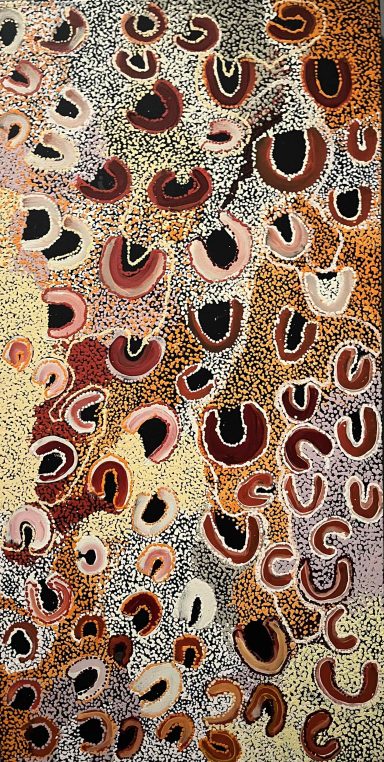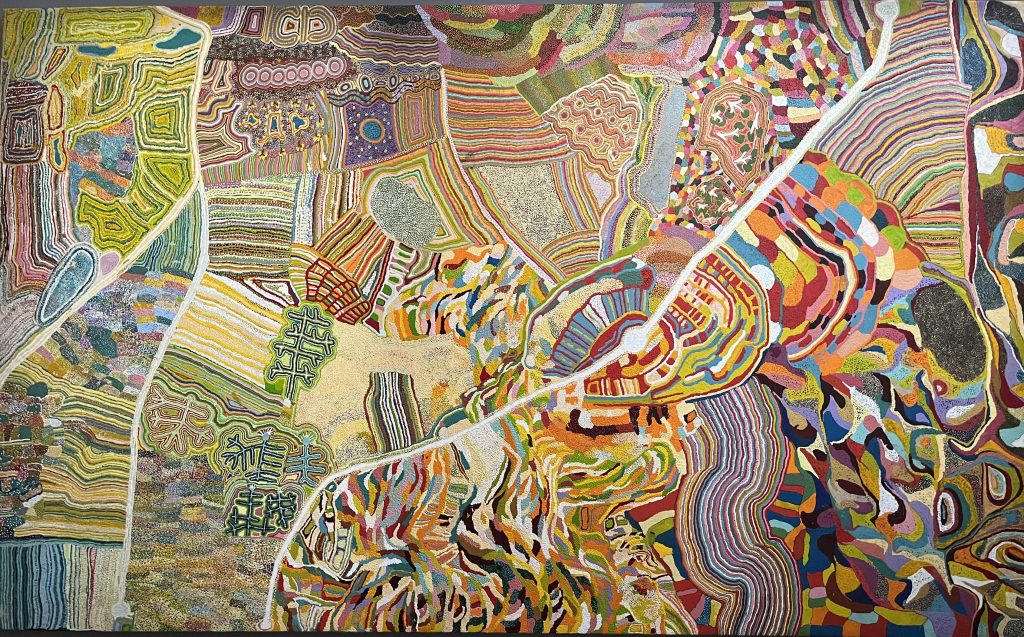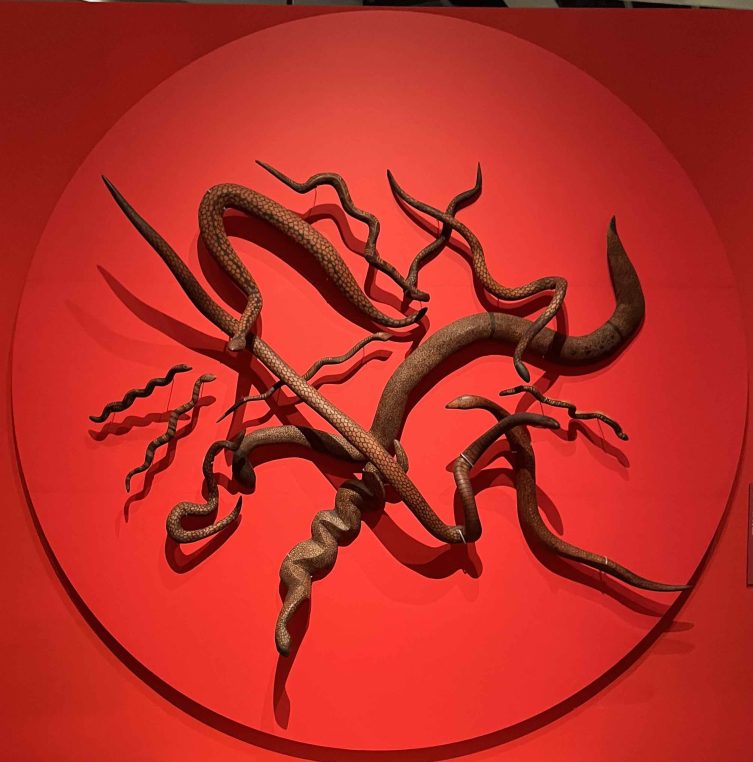Twelve years ago, Musée du Quai Branly organized an exhibition on “The origins of Aboriginal art in Australia” which was an eye opening show for most Parisians. Five years ago, the show “Songlines: songs from the Australian desert tracks” won best exhibition of the year 2018 at the National Museum of Australia in Canberra. It was conceived over ten years entirely by the populations of the three deserts and tells the journey of seven Ancestral women who are relentlessly pursued by a shapeshifter named Yurla or Wati Nyiru. It tells the creation of the earth and the transmission of cultural values through a tract of land which is personal to each individual. The elders speak to us on video throughout the show. The curator Margo Neale worked hard on the conception and the setting of the show. The Ambassor, Mrs Gillian Bird, has also opened the Embassy nearby to installations.

Nancy Nyanjilpavi Chapman, “Minyipuru Pangkalpa”, 2015, made at the Martumili Arts Center, National Museum of Australia
My first encounter with Aboriginal art was in Papunya, in 1981. Festival d’Automne in Paris was using Australia as their theme that year and Michel Guy, its president, had uncovered this first community of painters who transferred their paintings on the ground to canvases and acrylic. It was totally fascinating. Here we are dealing with Center and West Australian desert artists. The show was born when the traditional custodians from the Anangu people came to Margo Neale in Canberra, and asked her to save the Seven Sisters Songline. “Our songlines are all broken up …We want you to help put them back together again.” It is one of the five major routes that cover the entire continent. Potentially the entire world.
Because people are not connecting with their Country in the same way they did traditionally when they walked and had intimate daily contact, hunting an gathering food, the elders figured that they had to put their knowledge in the digital domain if they were to make a connection with the newt generation. Margo Neale travelled the country with the Elders, they recalled the stories and cultural practices though song, dance, art and film. The extraordinary paintings are visual representations of the songline story told like a modern Odyssey.
“Land in the Aboriginal world view is more than land as it si viewed in the Western World. It is a multidimensional concept that includes all things. There is no distinction between animate and inanimate, everything is living, everything has a place: people, animals, plants, earth, water and air.” says Margo Neale.
This show makes us travel far from our daily concerns and opens up a window on teh Australian desert and its mysterious traditions. It is also and exhibition of wonderful art through Martu Country, Ngaanyatjarra Lands and APY and NPY Lands. Most paintings are collaborative thus including different styles and mannequins (Tjanpi sisters) were made of rope and wool by weavers.
Another exhibition completes this brilliant fireworks with “Opening the album of the world“, 300 black and white photographs (1842-1896) devoted to discovering the world outside Europe. Based on the museum’s collection, it shows anthropological photos from 1844, Henry Egerton’s shots of Tibet in 1863 or Désiré Charnay’s pictures of Mexico. It is extraordinary by the quality of the prints and the rarity of the views.
Musée du quai Branly until July 2
Share this Post






2 Comments on “Aboriginal women take over Musée du Quai Branly with their “Songlines””
Merci Laure, pour ton feed back de l’exposition Songlines que j’ai vue hier soir ! Très belle et énigmatique.
Laure,
Many thanks for this article. Because I have mobility problems due to Parkinson’s, I can’t come to Paris. Your piece about Aboriginal women is an excellent substitute.
Lots of love,
Stephen